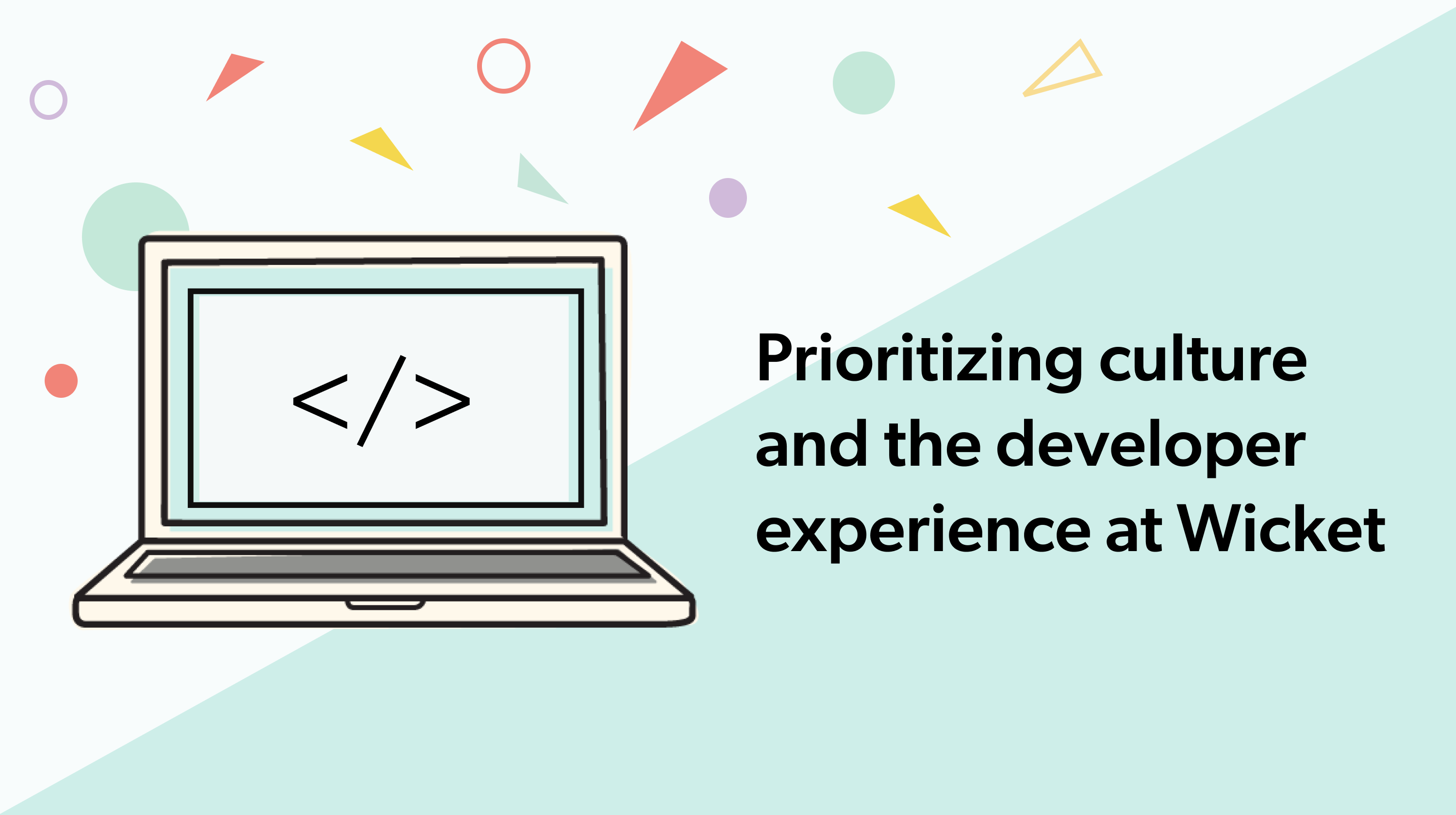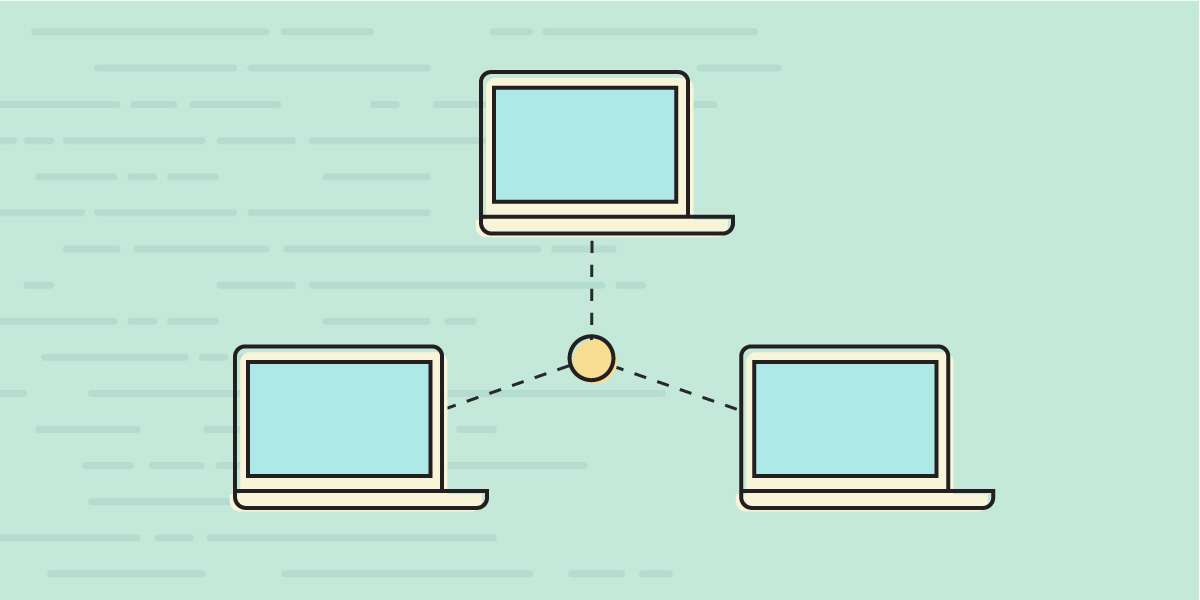Mad, Sad, Glad: Creating a stronger team through Agile retrospectives
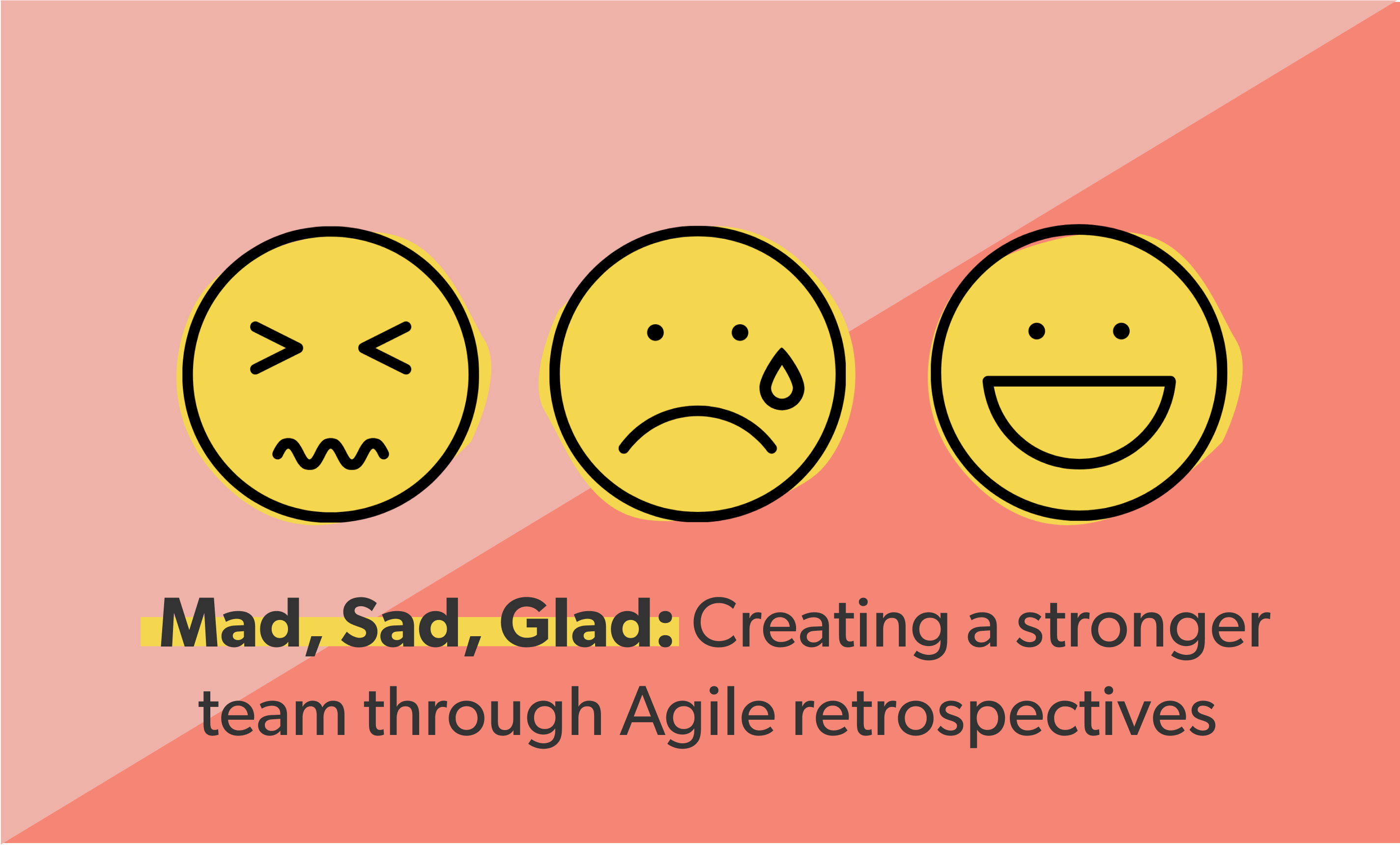
Wicket’s Co-founder and COO, Laura Mindorff, and CTO, Rob Villeneuve, recently led a Learning Lab at the ASAE Annual General Meeting. They used this time to explain what Agile is (and isn’t), its secret sauce (hint, feedback is a key), and how to host your first retrospective using the Mad, Sad, Glad exercise.
Laura and Rob bring years of experience managing teams. Laura focuses a lot of her time cultivating the culture at Wicket. Her ultimate goal is to help everyone bring out the best in themselves. Rob has always encouraged individuals and team improvement via Agile. He’s seen amazing team transformations come from this methodology and aims to take the “tech” out of Agile so teams of all disciplines can give it a try.
What is Agile?

Agile is a mindset, a way of thinking and a collection of values around how work should be organized in a complex and ever-changing world. Agile processes can include Scrum, Kanban, Lean, MVP, even sticky notes. But these are the how. At its core, Agile focuses on two key things: people and how we work best. Ultimately, this means embracing change rather than defending against it. When done successfully, Agile allows people and groups to…

Meet challenges
You already have a more confident mindset when you’re mentally prepared to face a challenge.

Learn quickly
Your future self will know more about this problem than your present self.
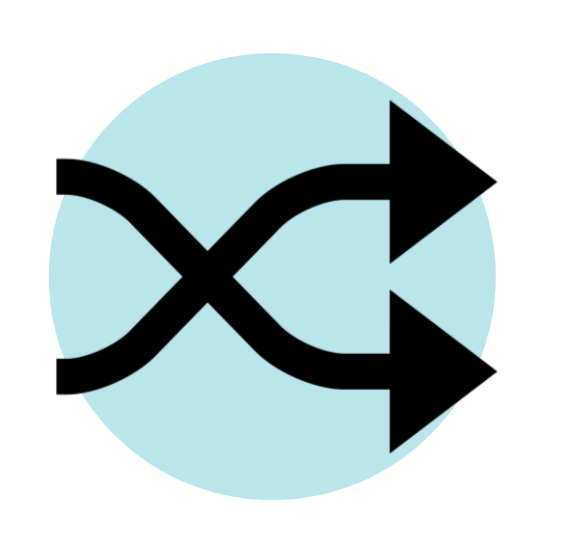
Respond to change
We were planning for this. We knew we were going to learn along the way, and a better path has emerged. Let’s take it.
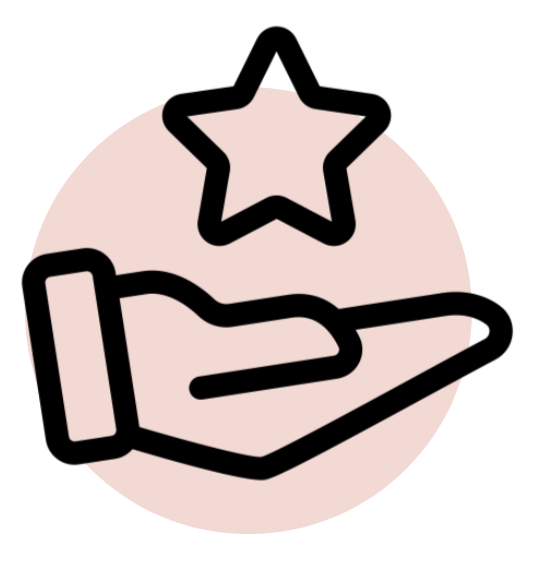
Deliver value
Work that is not delivering value is a waste of everyone’s time. Let’s instead break our work into small pieces of high value.
Principles of Agile
In 2001, a group of software developers saw a need for a new project management approach that provided more flexibility and could adapt to changes. They defined the 12 Principles of Agile:
- Satisfy the customer
- Welcome changing requirements
- Deliver working products frequently
- Collaborate often
- Motivated people
- Face-to-face conversations
- Measure of progress through working products
- Promote sustainable development
- Continuous attention to technical excellence
- Simplicity is essential
- Self-organized teams
- Regularly reflect on continuously improving
What is the opposite of Agile?
The waterfall method is commonly seen in colour-coded Gantt charts with exact dates, maybe even some icons, all carefully cascading down like a beautiful waterfall. It sounds lovely in theory, and these charts can even put your mind at ease. But the problem is they’re wrong 100% of the time. In many cases, we spend more time creating and updating the chart than working on the project.
Waterfall methods presuppose that the world is predictable. That we should invest most of our time in up-front planning, complete a large project based on the initial plan, and only evaluate it at the very end. It doesn’t account for changes and leaves little room for experimentation, freedom to fail, to learn from mistakes, and the ability to self-organize.
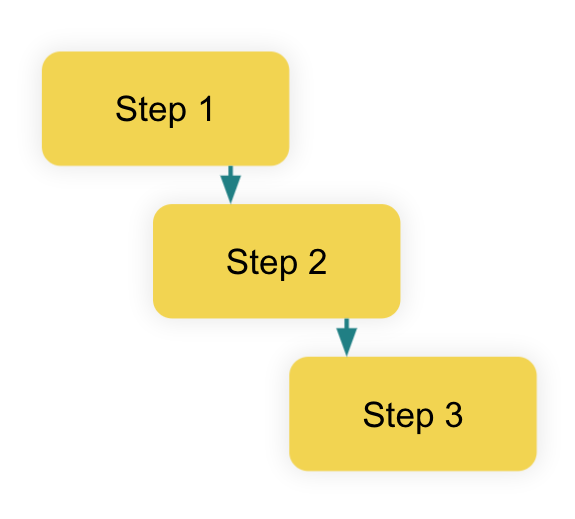
Sometimes, the other option is no plan at all, otherwise known as chaos. This happens when there is no shared plan or vision, so team members are pulled in different directions. Every employee for themselves. Ultimately, this leads to mistakes, duplicated efforts, reworking, and a lack of trust among team members.
Essentially Agile is…
- Not having the ultimate plan (like Waterfall)
- Not having no plan (like chaos)
- Having a plan that can (and will) change
Modern Agile
The original Agile principles are instrumental, but they are very tech-focused. Modern Agile simplifies classic Agile by focusing on four values that can be applied across various teams, not just a technical team.
Make safety a prerequisite
Safety is both a basic human need and a key to unlocking high performance. We actively establish safety before engaging in any type of work. We protect people’s time, information, reputation, money, health and relationships. And we endeavour to make our collaborations, products and services resilient and safe. This means no jerks allowed. We want to establish trust, transparency, and honesty.
Make people awesome
Steve Jobs used to ask his colleagues, “What incredible benefits can we give to the customer? Where can we take the customer?” In modern Agile, we ask how we can make people in our ecosystem awesome. This includes the people who use, make, buy, sell or fund our products or services. We learn their context and pain points, what holds them back and what they aspire to achieve. How can we make them awesome?
Experiment and learn rapidly
You can’t make people awesome or make safety a prerequisite if you aren’t learning. We learn rapidly by experimenting frequently. We make our experiments “safe to fail” so we are not afraid to conduct more experiments. When we get stuck or aren’t learning enough, we take it as a sign that we need to learn more by running more experiments.
Deliver value continuously
Anything that isn’t delivered isn’t helping anyone become more awesome or safe. In modern Agile, we ask ourselves, “How could valuable work be delivered faster?” Consistently delivering value requires us to divide larger amounts into smaller pieces that may be delivered safely now rather than later.
At Wicket, we constantly check in on ourselves. Are we living up to these values? If not, where could we improve? Secret: we can always improve, and that’s the point.
The Agile Process of Scrum
Scrum is a set of “ceremonies” (or meetings) that you can run with your team designed to cultivate the Agile values.
Within the Scrum framework, four key “ceremonies” take place at different points along the way.
1. Sprint Plan
- The concept of a sprint is to decide on a timeframe, then use this timeframe to wrap a plan around and later reflect on it. For us, it’s two weeks, but it could be one week or one month.
- Our first Scrum ceremony is a team meeting where we build a plan for the sprint. This plan can take many shapes or forms, but it always consists of the following:
- A defined timeframe (sprint)
- A goal for the sprint, usually derived from a larger product goal or strategic objective
- The team decides what is possible for this sprint to achieve this goal (there is likely more than one solution)
- Based on the goal and deciding how to accomplish it, the team breaks down their own work into smaller pieces called tasks.
2. Daily Standup
- Often referred to as the daily scrum or huddle
- Every day (at the same time), the team comes together to give a quick update.
- Everyone reports in on the following:
- What did I do yesterday?
- What am I doing today?
- Is there anything blocking my progress?
- How are we progressing toward our sprint goal
You should also have a Working Agreement document. Once you do the daily standup for a little while, you will notice little rules emerge that help keep the process efficient. It’s helpful to document these guidelines so everyone can stay accountable, define expectations, and enhance self-organization. No two agile teams are the same, so the team should decide what works best for their team.
3. Sprint Review
- Used to be referred to as the demonstration. Its purpose is to share progress and inspect outcomes. Did we achieve our goal?
- This is an opportunity to celebrate accomplishments and practice team accountability. If there is room for improvement, practice safety and it will lead to honesty and transparency.
4. Retrospective
- This happens at the end of the sprint. It’s a time to reflect and decide on improvements for the next sprint.
- The purpose of the retrospective is to inspect what happened and find ways to increase quality, effectiveness, and interactions. This is a good opportunity to reference the four Modern Agile values.
- The retrospective is usually two hours long and is broken into five steps:
- Set the stage: Get energized and check the team temperature
- Gather data: Guide the team through exploration exercises and reflect
- Generate insights: Attempt to generate insights, ask questions, and identify patterns.
- Decide what to do: The team, not the manager, puts together a plan of action and sets deliverables.
- Close: Wraps things up and recheck the team temperature.
Exercise: Mad, Sad, Glad
This is a simple yet effective exercise you can run that would fall within the “gather data” phase of your retrospective. It’s used to nurture your team’s emotional wellbeing by providing a platform to discuss frustrations, disappointments, and triumphs. The goal is to gather data from your team on how they feel about a timeframe (sprint).
In this exercise, you will ask your team to tell you things that made them feel either mad, sad or glad over the last sprint. Just the act of allowing space for your team to talk about their feelings in this way allows for vulnerability and eventually inspires trust within your team. Here are the steps the follow:
Explanation
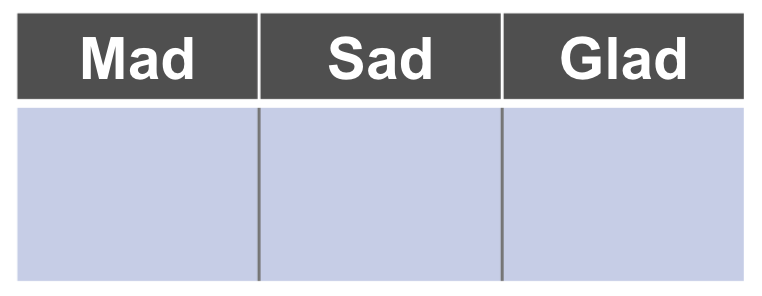
- Create a three-column table with labels Mad, Sad, Glad.
- Pick a timeframe
- Explain how to use sticky notes
Silent Writing
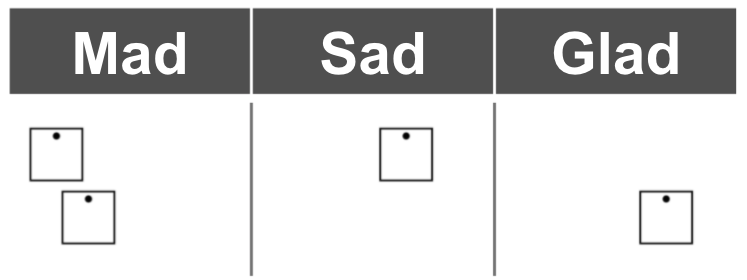
- Timebox the activity
- Team members begin adding sticky notes to each column
- Have an optional facilitator
Review and Group
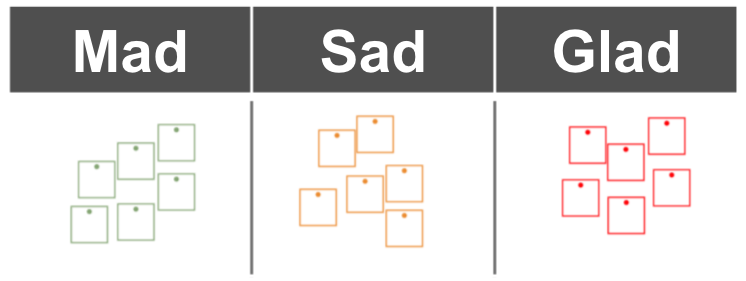
- Participants ready their sticky notes (feelings) one by one.
- Patterns and themes will begin to emerge, so similar sticky notes should get grouped together
- Challenges shouldn’t be solved at this point, but other team members can ask clarifying questions
Pick a Topic
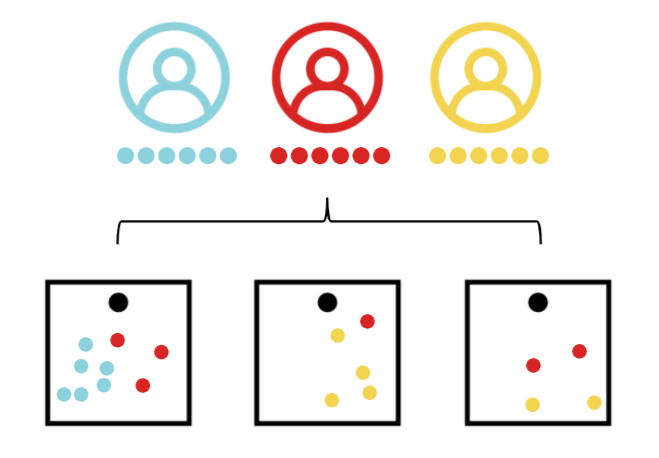
- The facilitator will summarize all topics
- The team will discuss clear topics that stand out
- If there are many topics, the team can participate in dot voting to make a fast, democratic decision on what topic(s) deserves the most attention. Everyone has the option to give three dots to one topic, two dots/one dot to two topics, or one dot to three topics. The topic(s) with the most dots will then be a focus for team discussion.
Other similar exercises to try…
- Start, Stop, Continue
- 4 Ls (“What I… ” Learned, Loved, Longed, Lacked)
These exercises can work either in-person or online. If in-person, you need a whiteboard and some sticky notes. If online, we recommend using software tools such as Miro and Retrium.
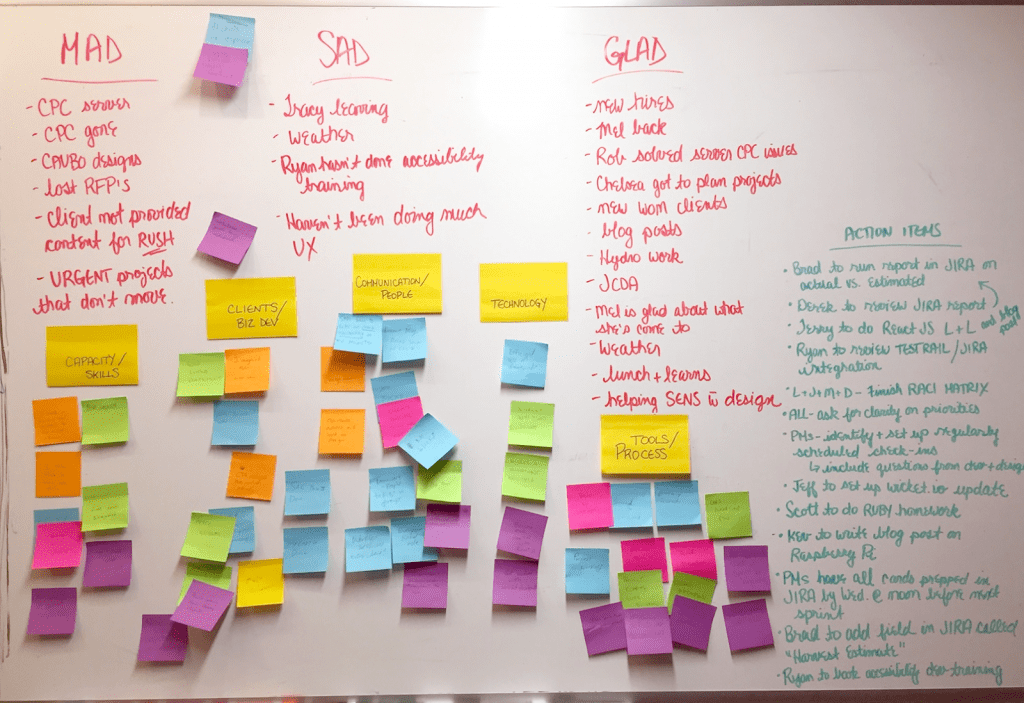
Mad, Sad Glad exercise done in-person using a whiteboard and sticky notes. 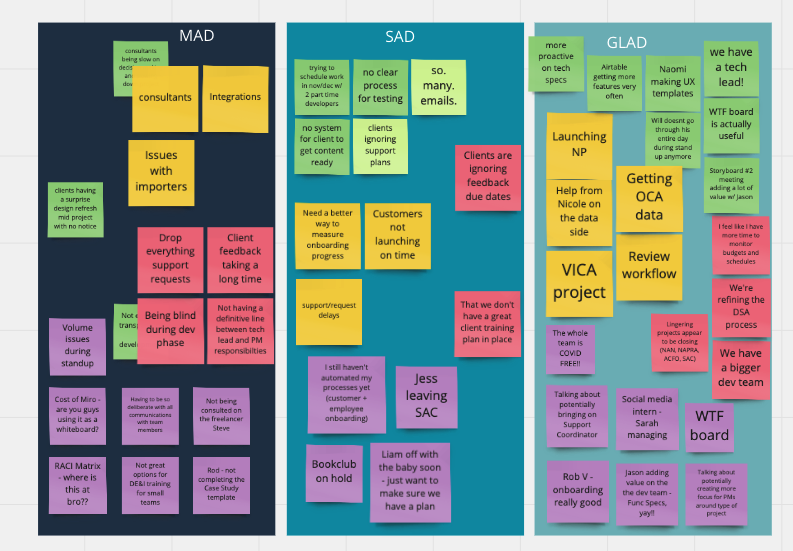
Mad, Sad, Glad exercise done using an online software program.

